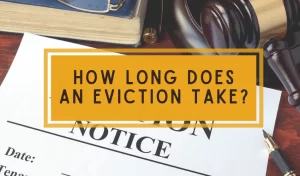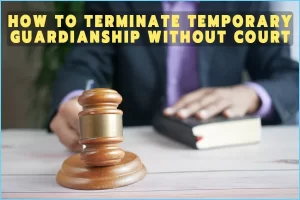Who Is The Respondent In A Family Court Case
Family court handles legal matters involving family relationships, such as divorce, child custody, child support, and domestic violence. When a case is filed in family court, there are two primary parties – the petitioner and the respondent. So who exactly is the respondent in a family court case?
Understanding the Basics of Family Court Litigation
To understand the role of the respondent, it’s important to first understand some basics about family court litigation. In any court case, there is always:
- A petitioner – the person who initiates legal action by filing paperwork with the court clerk. This person claims that legal rights have been violated in some way.
- A respondent – the person against whom the legal action is directed. The petitioner names the respondent in the initial paperwork that is filed.
- A judge or judicial officer – the person who presides over the legal proceedings, hears evidence, and makes rulings.
The petitioner must properly notify the respondent that legal action has been initiated against them. The respondent then has an opportunity to file a response with the court, presenting their side of the case.
The Petitioner’s Role in a Family Court Case
In a family court case, the petitioner is the person who starts the legal proceedings by submitting paperwork, called a “petition” or “complaint,” with the court.
For example:
- If someone files for divorce, they are the petitioner and their spouse is the respondent.
- If someone requests custody of a child, they are the petitioner and the other parent is the respondent.
- If someone files a request for a protection order, they are the petitioner and the alleged abuser is the respondent.
The petitioner identifies the key facts and circumstances behind their request for legal intervention by the court and states what outcome they are seeking through the court proceedings.
Who Is the Respondent?
So if the petitioner initiates the court action, the respondent is the person against whom the case is filed. The petitioner names the respondent in the initial paperwork submitted to the court when filing for legal action.
The respondent may be served with different names on court paperwork depending on the specifics of the case:
- In a divorce case: The non-filing spouse is the respondent and may be listed as just “respondent” or specifically “respondent husband/wife.”
- In a paternity case: The alleged or presumed father is the respondent and may be called the “putative father.”
- In a domestic violence case: The alleged abuser is the respondent.
- In a child custody case: The non-filing parent is the respondent.
No matter what they are called on the paperwork, the key defining feature is that the respondent is on the receiving end of the legal action initially filed with the court. The petitioner claims that the respondent has committed some wrong against them or otherwise stands in the way of their legal rights.
Notifying the Respondent of the Court Action
Once the petitioner submits their paperwork requesting legal intervention by the court, the respondent must be properly served with notice that they are being sued. There are specific procedural rules about legally sufficient notice and service of process.
Some common ways a respondent may be notified include:
- Personal delivery of paperwork by a process server – This involves having an adult personally hand the court paperwork to the respondent. The server then files an affidavit with the court stating details of when and where the respondent was served.
- Certified mail to the respondent’s home or work address – The court paperwork is mailed to the respondent via certified mail, which requires a signature upon receipt. The signed proof of delivery is filed with the court.
- Publication in a local newspaper – If the respondent cannot be located, the petitioner may be permitted to publish a notice about the court action in a community newspaper for a designated period of time.
Proper notice gives the respondent a chance to respond to the petitioner’s allegations and build their own case. If the respondent never responds, the petitioner may receive a default judgment in their favor.
The Respondent’s Role in Responding to the Case
Once served with notice of the pending court action, the respondent has a certain timeframe in which to file a formal response with the court, such as an “answer” or “response.” In the response, the respondent can:
- Address each allegation made by the petitioner – The respondent can admit, deny, or claim insufficient knowledge about each specific allegation made. The respondent should provide clear explanations and supporting facts.
- Assert any affirmative defenses – The respondent can claim certain legal defenses like jurisdiction issues, statute of limitations, estoppel, etc.
- Make any applicable counterclaims – The respondent may have their own counterclaims relating to the subject matter of the case that they want the court to address.
The respondent’s formal response becomes part of the case record and provides their side of the story. It also helps frame the areas of disagreement that the court may need to address and settle between the parties.
Examples of Respondents in Common Family Court Cases
Here are some examples to help illustrate who would be considered the respondent in some typical cases that come before a family court:
Divorce Case
Molly files for divorce from her husband Mike. In her petition for dissolution of marriage, Molly identifies herself as the petitioner. She names her husband Mike as the respondent.
Mike is served with notice that Molly has filed for divorce when a process server personally delivers the divorce paperwork to Mike. Mike is the respondent because he is the spouse being sued for divorce by the petitioner Molly.
Child Custody Case
Wyatt and Lucy have an 8-year-old daughter together, but were never married. Wyatt has filed a petition with the court seeking joint legal and physical custody of their daughter. Since Wyatt initiated the court action, he is the petitioner. Lucy is named as the respondent in Wyatt’s petition and must be served notice of the custody case.
Domestic Violence Case
Sara has been suffering physical abuse at the hands of her boyfriend Joe. Sara files a petition requesting a protective order against Joe to stop the abuse. Sara is the petitioner in this domestic violence case. Joe is named as the respondent since he is the alleged abuser from whom Sara is seeking protection through the court.
Paternity Case
Danielle gives birth to a son but is unsure who the father is between her ex-boyfriend Mark and a man named David she briefly dated. Danielle files a petition with the court asking that both men submit to genetic testing to establish paternity.
Danielle is the petitioner as she initiated the court action. Mark and David are named respondents as the alleged potential fathers who will have to respond to Danielle’s petition and undergo paternity testing if ordered by the court.
The Respondent’s Legal Rights and Protections
The respondent is not simply an innocent bystander with no rights just because the petitioner filed first. The respondent is entitled to certain legal protections, including:
- The right to be properly served with notice of the case
- The right to see all paperwork the petitioner files
- The right to file pleadings and evidence in response
- The right to disagree with the petitioner’s claims
- The right to make counterclaims against the petitioner
- The right to seek access to the child(ren)
- The right to request discovery from the petitioner
- The right to an impartial judge and jury if applicable
- The right to appeal if the final judgment is unfavorable
The respondent should exercise these rights to ensure their interests are fairly represented and heard during the court proceedings.
Getting Legal Help as the Respondent
Facing a lawsuit is always stressful, especially when it involves important family relationships or children. The respondent would be wise to contact an experienced family law attorney for guidance right away if served with divorce, custody, support, or protection order paperwork.
An attorney can advise the respondent on whether any allegations made by the petitioner have legal merit, what options the respondent may have, and the best legal strategies to protect the respondent’s rights and interests moving forward. Having a lawyer’s expertise can be extremely valuable for someone named as a respondent in family court.
Key Takeaways
- The petitioner initiates a family court case while the respondent is on the receiving end of the legal action.
- The petitioner names and serves the respondent when filing paperwork to start the court proceedings.
- The respondent must be properly notified and given a chance to respond to the petitioner’s allegations.
- The respondent can address the petitioner’s claims, raise defenses, and make counterclaims.
- The respondent has legal protections and should seek legal counsel to navigate the case.
Understanding the distinct roles and rights of the petitioner versus the respondent will help anyone involved in a family court case during what can be a challenging time.
Conclusion
In summary, the respondent in a family court case is the person against whom the legal action is filed. The petitioner initiates the case by submitting paperwork naming the respondent, who must then be properly served notice of the proceedings. While the petitioner asserts claims and seeks relief through the court, the respondent has an opportunity to respond and provide their own perspective. Family court cases have two essential sides – petitioner and respondent. Identifying who is who in a given case helps outline the rights, responsibilities, and relationships between the parties involved in the litigation. Anyone named as a respondent would be prudent to exercise their legal rights and consult an attorney to protect their interests through the court process.
5 Key FAQs about the Respondent in Family Court
1. Does the respondent have to file any paperwork in a court case?
The respondent is not legally required to file responses or appear in court. However, it is highly advisable for the respondent to engage in the case by filing an answer, response or reply disputing the petitioner’s allegations. If the respondent fails to respond, the court may enter a default judgment against them.
2. Can a respondent make any legal claims against the petitioner?
Yes, the respondent can assert affirmative defenses as well as any applicable counterclaims against the petitioner in their formal court filings. This allows the court to hear the respondent’s side of the case.
3. What happens if the respondent can’t be located to be served notice?
The petitioner may be allowed to serve the respondent by publishing a legal notice in a local newspaper for a specified period of time. The case can still proceed if the respondent does not respond after published notice.
4. Does a respondent need a family law attorney?
It is highly advisable for a respondent to hire a qualified attorney to represent their interests in the court case. Procedural rules and family laws can be complex. An attorney’s counsel and advocacy can be invaluable.
5. Can a respondent recover legal fees and costs?
If the respondent prevails in the case, they may be able to recover attorneys fees and court costs from the petitioner depending on the laws and judge’s discretion.







